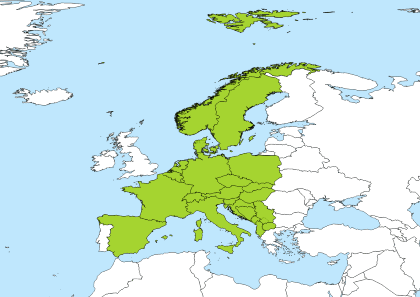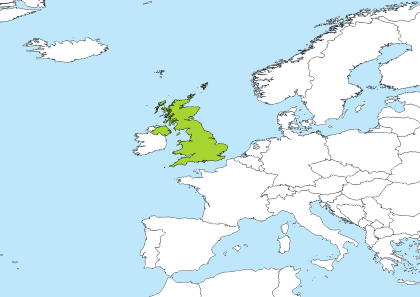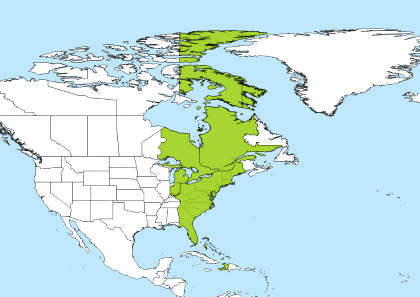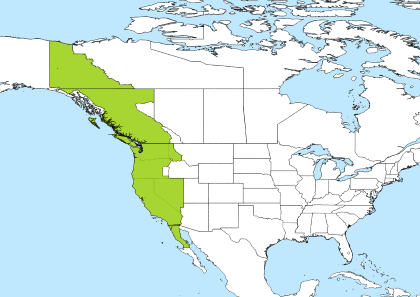AEST to CEST to BST to UTC to EDT to PDT
Time Difference
Australian Eastern Standard Time is 8 hours ahead of Central European Summer Time and 9 hours ahead of British Summer Time and 10 hours ahead of Universal Time Coordinated and 14 hours ahead of Eastern Daylight Time and 17 hours ahead of Pacific Daylight Time
11:00 pm23:00 in AEST is 3:00 pm15:00 in CEST and is 2:00 pm14:00 in BST and is 1:00 pm13:00 in UTC and is 9:00 am09:00 in EDT and is 6:00 am06:00 in PDT
AEST to CEST call time
Best time for a conference call or a meeting is between 4pm-6pm in AEST which corresponds to 8am-10am in CEST
AEST to BST call time
Best time for a conference call or a meeting is between 5pm-7pm in AEST which corresponds to 8am-10am in BST
AEST to UTC call time
Best time for a conference call or a meeting is between 6pm-8pm in AEST which corresponds to 8am-10am in UTC
AEST to EDT call time
Best time for a conference call or a meeting is between 8pm-10pm in AEST which corresponds to 6am-8am in EDT
AEST to PDT call time
Best time for a conference call or a meeting is between 9:30pm-11:30pm in AEST which corresponds to 4:30am-6:30am in PDT
11:00 pm23:00 Australian Eastern Standard Time (AEST). Offset UTC +10:00 hours
3:00 pm15:00 Central European Summer Time (CEST). Offset UTC +2:00 hours
2:00 pm14:00 British Summer Time (BST). Offset UTC +1:00 hour
1:00 pm13:00 Universal Time Coordinated (UTC). Offset UTC 0:00 hours
9:00 am09:00 Eastern Daylight Time (EDT). Offset UTC -4:00 hours
6:00 am06:00 Pacific Daylight Time (PDT). Offset UTC -7:00 hours
11:00 pm23:00 AEST / 3:00 pm15:00 CEST / 2:00 pm14:00 BST / 1:00 pm13:00 UTC / 9:00 am09:00 EDT / 6:00 am06:00 PDT
| AEST | CEST | BST | UTC | EDT | PDT |
|---|---|---|---|---|---|
| 12am (midnight) | 4pm | 3pm | 2pm | 10am | 7am |
| 1am | 5pm | 4pm | 3pm | 11am | 8am |
| 2am | 6pm | 5pm | 4pm | 12pm (noon) | 9am |
| 3am | 7pm | 6pm | 5pm | 1pm | 10am |
| 4am | 8pm | 7pm | 6pm | 2pm | 11am |
| 5am | 9pm | 8pm | 7pm | 3pm | 12pm (noon) |
| 6am | 10pm | 9pm | 8pm | 4pm | 1pm |
| 7am | 11pm | 10pm | 9pm | 5pm | 2pm |
| 8am | 12am (midnight) | 11pm | 10pm | 6pm | 3pm |
| 9am | 1am | 12am (midnight) | 11pm | 7pm | 4pm |
| 10am | 2am | 1am | 12am (midnight) | 8pm | 5pm |
| 11am | 3am | 2am | 1am | 9pm | 6pm |
| 12pm (noon) | 4am | 3am | 2am | 10pm | 7pm |
| 1pm | 5am | 4am | 3am | 11pm | 8pm |
| 2pm | 6am | 5am | 4am | 12am (midnight) | 9pm |
| 3pm | 7am | 6am | 5am | 1am | 10pm |
| 4pm | 8am | 7am | 6am | 2am | 11pm |
| 5pm | 9am | 8am | 7am | 3am | 12am (midnight) |
| 6pm | 10am | 9am | 8am | 4am | 1am |
| 7pm | 11am | 10am | 9am | 5am | 2am |
| 8pm | 12pm (noon) | 11am | 10am | 6am | 3am |
| 9pm | 1pm | 12pm (noon) | 11am | 7am | 4am |
| 10pm | 2pm | 1pm | 12pm (noon) | 8am | 5am |
| 11pm | 3pm | 2pm | 1pm | 9am | 6am |
| 0:00 | 16:00 | 15:00 | 14:00 | 10:00 | 7:00 |
| 1:00 | 17:00 | 16:00 | 15:00 | 11:00 | 8:00 |
| 2:00 | 18:00 | 17:00 | 16:00 | 12:00 | 9:00 |
| 3:00 | 19:00 | 18:00 | 17:00 | 13:00 | 10:00 |
| 4:00 | 20:00 | 19:00 | 18:00 | 14:00 | 11:00 |
| 5:00 | 21:00 | 20:00 | 19:00 | 15:00 | 12:00 |
| 6:00 | 22:00 | 21:00 | 20:00 | 16:00 | 13:00 |
| 7:00 | 23:00 | 22:00 | 21:00 | 17:00 | 14:00 |
| 8:00 | 0:00 | 23:00 | 22:00 | 18:00 | 15:00 |
| 9:00 | 1:00 | 0:00 | 23:00 | 19:00 | 16:00 |
| 10:00 | 2:00 | 1:00 | 0:00 | 20:00 | 17:00 |
| 11:00 | 3:00 | 2:00 | 1:00 | 21:00 | 18:00 |
| 12:00 | 4:00 | 3:00 | 2:00 | 22:00 | 19:00 |
| 13:00 | 5:00 | 4:00 | 3:00 | 23:00 | 20:00 |
| 14:00 | 6:00 | 5:00 | 4:00 | 0:00 | 21:00 |
| 15:00 | 7:00 | 6:00 | 5:00 | 1:00 | 22:00 |
| 16:00 | 8:00 | 7:00 | 6:00 | 2:00 | 23:00 |
| 17:00 | 9:00 | 8:00 | 7:00 | 3:00 | 0:00 |
| 18:00 | 10:00 | 9:00 | 8:00 | 4:00 | 1:00 |
| 19:00 | 11:00 | 10:00 | 9:00 | 5:00 | 2:00 |
| 20:00 | 12:00 | 11:00 | 10:00 | 6:00 | 3:00 |
| 21:00 | 13:00 | 12:00 | 11:00 | 7:00 | 4:00 |
| 22:00 | 14:00 | 13:00 | 12:00 | 8:00 | 5:00 |
| 23:00 | 15:00 | 14:00 | 13:00 | 9:00 | 6:00 |
Australian Eastern Standard Time
Offset: AEST is 10 hours ahead Greenwich Mean Time (GMT) and is used in Australia
Countries: It is used in following countries: Australia
Principal Cities: The largest city in the AEST timezone is Sydney from Australia with population about 4.627 million people. Other major cities in the area are Melbourne, Brisbane, Gold Coast, Canberra

Daylight Saving: This is a standard timezone, however during summer some places switch clocks for one hour forward when daylight saving comes into effect and observe Australian Eastern Daylight Time (AEDT).
 Start: Australian Eastern Standard Time (AEST) started on Sunday, April 6, 2025 at 3:00 am local time and clocks were set one hour back to Sunday, April 6, 2025, 2:00 am. Standard time starts annually the on first Sunday of April.
Start: Australian Eastern Standard Time (AEST) started on Sunday, April 6, 2025 at 3:00 am local time and clocks were set one hour back to Sunday, April 6, 2025, 2:00 am. Standard time starts annually the on first Sunday of April.
 End: Australian Eastern Standard Time (AEST) ends on Sunday, October 5, 2025 at 2:00 am local time and clocks are set one hour forward to Sunday, October 5, 2025, 3:00 am local daylight time instead. Standard time starts annually the on first Sunday of October.
End: Australian Eastern Standard Time (AEST) ends on Sunday, October 5, 2025 at 2:00 am local time and clocks are set one hour forward to Sunday, October 5, 2025, 3:00 am local daylight time instead. Standard time starts annually the on first Sunday of October.
Australian Eastern Standard Time (AEST) is used in Queensland, Victoria, Tasmania, New South Wales (except Broken Hill), Australian Capital Territory and in folling major cities Brisbane, Sydney, Melbourne, Hobart, Canberra
Only part of Australia observe daylight saving. It is used in New South Wales, Victoria, South Australia, Tasmania, and the Australian Capital Territory. Daylight saving is not observed in Queensland, Western Australia or the Northern Territory.
AEST representations, usage and related time zones
- +10 - basic short
- +1000 - basic
- +10:00 - extended
- +1000 - sign character (+) followed by a four digit time providing hours (10) and minutes (00) of the offset. Indicates ten hour and zero minutes time differences to the east of the zero meridian.
- Kilo - Military abbreviation for AEST
- K - short form of 'Kilo'
- Antarctica/Macquarie
- Australia/ACT
- Australia/Brisbane
- Australia/Canberra
- Australia/Currie
- Australia/Hobart
- Australia/Lindeman
- Australia/Melbourne
- Australia/NSW
- Australia/Queensland
- Australia/Sydney
- Australia/Tasmania
- Australia/Victoria
- AEST - Australian Eastern Standard Time
- CHUT - Chuuk Time
- ChST - Chamorro Standard Time
- K - Kilo Time Zone
- KDT - Korea Daylight Time
- PGT - Papua New Guinea Time
- VLAT - Vladivostok Time
- YAKST - Yakutsk Summer Time
- YAPT - Yap Time
Central European Summer Time
Offset: CEST is 2 hours ahead Greenwich Mean Time (GMT) and is used in Europe
Countries: It is used in following countries: Andorra, Albania, Austria, Bosnia & Herzegovina, Belgium, Switzerland, Czech Republic, Germany, Denmark, Spain, France, Gibraltar, Croatia, Hungary, Italy, Liechtenstein, Luxembourg, Monaco, Montenegro, North Macedonia, Malta, Netherlands, Norway, Poland, Serbia, Sweden, Slovenia, Svalbard & Jan Mayen, Slovakia, San Marino, Vatican City
Principal Cities: The largest city in the CEST timezone is Berlin from Germany with population about 3.426 million people. Other major cities in the area are Madrid, Rome, Paris, Budapest
German: MESZ - Mitteleuropäische Sommerzeit

Daylight Saving: Central European Summer Time (CEST) is a daylight saving/summer timezone, however during winter some places switch clocks for one hour back and observe Central European Time (CET).
 Start: Central European Summer Time (CEST) started on Sunday, March 30, 2025 at 2:00 am local time and clocks were set one hour forward to Sunday, March 30, 2025, 3:00 am. Daylight saving starts annually the on last Sunday of March
Start: Central European Summer Time (CEST) started on Sunday, March 30, 2025 at 2:00 am local time and clocks were set one hour forward to Sunday, March 30, 2025, 3:00 am. Daylight saving starts annually the on last Sunday of March
 End: Central European Summer Time (CEST) ends on Sunday, October 26, 2025 at 3:00 am local time and clocks are set one hour back to Sunday, October 26, 2025, 2:00 am local standard time instead. Daylight saving ends annually the on last Sunday of October
End: Central European Summer Time (CEST) ends on Sunday, October 26, 2025 at 3:00 am local time and clocks are set one hour back to Sunday, October 26, 2025, 2:00 am local standard time instead. Daylight saving ends annually the on last Sunday of October
CEST representations, usage and related time zones
- +02 - basic short
- +0200 - basic
- +02:00 - extended
- +0200 - sign character (+) followed by a four digit time providing hours (02) and minutes (00) of the offset. Indicates two hour and zero minutes time differences to the east of the zero meridian.
- Bravo - Military abbreviation for CEST
- B - short form of 'Bravo'
- Africa/Ceuta
- Arctic/Longyearbyen
- Atlantic/Jan_Mayen
- CET
- Europe/Amsterdam
- Europe/Andorra
- Europe/Belgrade
- Europe/Berlin
- Europe/Bratislava
- Europe/Brussels
- Europe/Budapest
- Europe/Busingen
- Europe/Copenhagen
- Europe/Gibraltar
- Europe/Ljubljana
- Europe/Luxembourg
- Europe/Madrid
- Europe/Malta
- Europe/Monaco
- Europe/Oslo
- Europe/Paris
- Europe/Podgorica
- Europe/Prague
- Europe/Rome
- Europe/San_Marino
- Europe/Sarajevo
- Europe/Skopje
- Europe/Stockholm
- Europe/Tirane
- Europe/Vaduz
- Europe/Vatican
- Europe/Vienna
- Europe/Warsaw
- Europe/Zagreb
- Europe/Zurich
- MET
- Poland
- CEST - Central European Summer Time
- EET - Eastern European Time
- MESZ - Mitteleuropäische Sommerzeit
- B - Bravo Time Zone
- CAT - Central Africa Time
- IST - Israel Standard Time
- SAST - South Africa Standard Time
- WAST - West Africa Summer Time
British Summer Time
Offset: BST is 1 hour ahead Greenwich Mean Time (GMT) and is used in Europe
Countries: It is used in following countries: Britain (UK), Guernsey, Isle of Man, Jersey
Principal Cities: The largest city in the BST timezone is London from United Kingdom with population about 7.557 million people. Other major cities in the area are Birmingham, Glasgow, Liverpool, Saint Helier

Daylight Saving: British Summer Time (BST) is a daylight saving/summer timezone, however during winter some places switch clocks for one hour back and observe Greenwich Mean Time (GMT).
 Start: British Summer Time (BST) started on Sunday, March 30, 2025 at 1:00 am local time and clocks were set one hour forward to Sunday, March 30, 2025, 2:00 am. Daylight saving starts annually the on last Sunday of March
Start: British Summer Time (BST) started on Sunday, March 30, 2025 at 1:00 am local time and clocks were set one hour forward to Sunday, March 30, 2025, 2:00 am. Daylight saving starts annually the on last Sunday of March
 End: British Summer Time (BST) ends on Sunday, October 26, 2025 at 2:00 am local time and clocks are set one hour back to Sunday, October 26, 2025, 1:00 am local standard time instead. Daylight saving ends annually the on last Sunday of October
End: British Summer Time (BST) ends on Sunday, October 26, 2025 at 2:00 am local time and clocks are set one hour back to Sunday, October 26, 2025, 1:00 am local standard time instead. Daylight saving ends annually the on last Sunday of October
BST representations, usage and related time zones
- +01 - basic short
- +0100 - basic
- +01:00 - extended
- +0100 - sign character (+) followed by a four digit time providing hours (01) and minutes (00) of the offset. Indicates one hour and zero minutes time differences to the east of the zero meridian.
- Alpha - Military abbreviation for BST
- A - short form of 'Alpha'
- Europe/Belfast
- Europe/Guernsey
- Europe/Isle_of_Man
- Europe/Jersey
- Europe/London
- GB
- GB-Eire
- British Summer Time - UTC +1
- Bangladesh Standard Time - UTC +6
- Bougainville Standard Time - UTC +11
- Brasilia Standard Time - UTC -3
- BST - British Summer Time
- CET - Central European Time
- IST - Irish Standard Time
- WEST - Western European Summer Time
- A - Alpha Time Zone
- CET - Central European Time
- MEZ - Mitteleuropäische Zeit
- WAT - West Africa Time
- WST - Western Sahara Summer Time
- BMT - Biel Mean Time
Universal Time Coordinated
Offset: UTC is 0 hours ahead Greenwich Mean Time (GMT) and is used in Universal
Coordinated Universal Time (UTC) is the world time standard that regulates clocks and time. It is successor to Greenwich Mean Time (GMT). For casual use, UTC is the same as GMT, but is used by the scientific community.
UTC is the time standard commonly used across the world since 1972. It is used in many technical fields, like aviation industry and meteorologists, also used to synchronize time across internet networks.
UTC representations, usage and related time zones
- Z - is the zone designator for the zero UTC/GMT offset, also known as 'Zulu' time
- +00 - basic short
- +0000 - basic
- +00:00 - extended
- +0000 - sign character (+) followed by a four digit time providing hours (00) and minutes (00) of the offset. Indicates zero hour and zero minutes time differences of the zero meridian.
- Zulu - Military abbreviation for UTC
- Z - short form of 'Zulu'
- Etc/UCT
- Etc/UTC
- Etc/Universal
- Etc/Zulu
- UCT
- UTC
- Universal
- Zulu
- EGST - Eastern Greenland Summer Time
- GMT - Greenwich Mean Time
- WET - Western European Time
- AZOST - Azores Summer Time
- UTC - Universal Time Coordinated
- WT - Western Sahara Standard Time
- Z - Zulu Time Zone
Eastern Daylight Time
Offset: EDT is 4 hours behind Greenwich Mean Time (GMT) and is used in North America
Countries: It is used in following countries: Bahamas, Canada, Haiti, Turks & Caicos Is, United States
Principal Cities: The largest city in the EDT timezone is New York City from USA with population about 8.175 million people. Other major cities in the area are Toronto, Montreal, Brooklyn, Borough of Queens
French: HAE - Heure Avancée de l'Est
Spanish: EDT - Tiempo de verano del Este, ET - Zona Sureste

Daylight Saving: Eastern Daylight Time (EDT) is a daylight saving/summer timezone, however during winter some places switch clocks for one hour back and observe Eastern Standard Time (EST).
 Start: Eastern Daylight Time (EDT) started on Sunday, March 9, 2025 at 2:00 am local time and clocks were set one hour forward to Sunday, March 9, 2025, 3:00 am. Daylight saving starts annually the on second Sunday of March
Start: Eastern Daylight Time (EDT) started on Sunday, March 9, 2025 at 2:00 am local time and clocks were set one hour forward to Sunday, March 9, 2025, 3:00 am. Daylight saving starts annually the on second Sunday of March
 End: Eastern Daylight Time (EDT) ends on Sunday, November 2, 2025 at 2:00 am local time and clocks are set one hour back to Sunday, November 2, 2025, 1:00 am local standard time instead. Daylight saving ends annually the on first Sunday of November
End: Eastern Daylight Time (EDT) ends on Sunday, November 2, 2025 at 2:00 am local time and clocks are set one hour back to Sunday, November 2, 2025, 1:00 am local standard time instead. Daylight saving ends annually the on first Sunday of November
EDT representations, usage and related time zones
- -04 - basic short
- -0400 - basic
- -04:00 - extended
- -0400 - sign character (-) followed by a four digit time providing hours (04) and minutes (00) of the offset. Indicates four hour and zero minutes time differences to the west of the zero meridian.
- Quebec - Military abbreviation for EDT
- Q - short form of 'Quebec'
- America/Detroit
- America/Fort_Wayne
- America/Grand_Turk
- America/Indiana/Indianapolis
- America/Indiana/Marengo
- America/Indiana/Petersburg
- America/Indiana/Vevay
- America/Indiana/Vincennes
- America/Indiana/Winamac
- America/Indianapolis
- America/Iqaluit
- America/Kentucky/Louisville
- America/Kentucky/Monticello
- America/Louisville
- America/Montreal
- America/Nassau
- America/New_York
- America/Nipigon
- America/Pangnirtung
- America/Port-au-Prince
- America/Thunder_Bay
- America/Toronto
- Canada/Eastern
- EST5EDT
- US/East-Indiana
- US/Eastern
- US/Michigan
- AST - Atlantic Standard Time
- EDT - Eastern Daylight Time
- AMT - Amazon Time
- BOT - Bolivia Time
- CDT - Cuba Daylight Time
- CLT - Chile Standard Time
- FKT - Falkland Island Time
- GYT - Guyana Time
- HLV - Hora Legal de Venezuela
- PYT - Paraguay Time
- Q - Quebec Time Zone
- VET - Venezuelan Standard Time
Pacific Daylight Time
Offset: PDT is 7 hours behind Greenwich Mean Time (GMT) and is used in North America
Countries: It is used in following countries: Canada, Mexico, United States
Principal Cities: The largest city in the PDT timezone is Los Angeles from USA with population about 3.793 million people. Other major cities in the area are Vancouver, Tijuana, San Diego, San Jose
French: HAP - Heure Avancée du Pacifique
Spanish: PT - Zona Noroeste

Daylight Saving: Pacific Daylight Time (PDT) is a daylight saving/summer timezone, however during winter some places switch clocks for one hour back and observe Pacific Standard Time (PST).
 Start: Pacific Daylight Time (PDT) started on Sunday, March 9, 2025 at 2:00 am local time and clocks were set one hour forward to Sunday, March 9, 2025, 3:00 am. Daylight saving starts annually the on second Sunday of March
Start: Pacific Daylight Time (PDT) started on Sunday, March 9, 2025 at 2:00 am local time and clocks were set one hour forward to Sunday, March 9, 2025, 3:00 am. Daylight saving starts annually the on second Sunday of March
 End: Pacific Daylight Time (PDT) ends on Sunday, November 2, 2025 at 2:00 am local time and clocks are set one hour back to Sunday, November 2, 2025, 1:00 am local standard time instead. Daylight saving ends annually the on first Sunday of November
End: Pacific Daylight Time (PDT) ends on Sunday, November 2, 2025 at 2:00 am local time and clocks are set one hour back to Sunday, November 2, 2025, 1:00 am local standard time instead. Daylight saving ends annually the on first Sunday of November
PDT representations, usage and related time zones
- -07 - basic short
- -0700 - basic
- -07:00 - extended
- -0700 - sign character (-) followed by a four digit time providing hours (07) and minutes (00) of the offset. Indicates seven hour and zero minutes time differences to the west of the zero meridian.
- Tango - Military abbreviation for PDT
- T - short form of 'Tango'
- America/Ensenada
- America/Los_Angeles
- America/Santa_Isabel
- America/Tijuana
- America/Vancouver
- Canada/Pacific
- Mexico/BajaNorte
- PST8PDT
- US/Pacific
- MST - Mountain Standard Time
- PDT - Pacific Daylight Time
- YST - Yukon Standard Time
- T - Tango Time Zone
